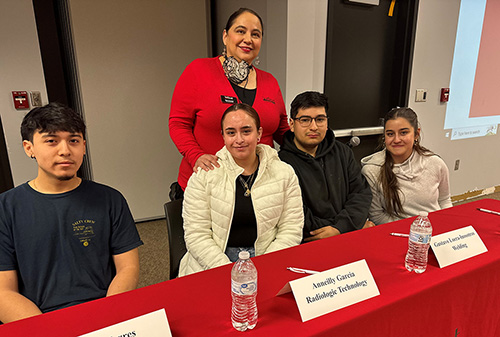SOUTH SIOUX CITY, Neb. – New estimates from the U.S. Census Bureau indicate that most of the population growth taking place in the nation is occurring from Hispanic births.
The statistics released last month from the U.S. Census Bureau indicated that between 2022 and 2023, the Hispanic population accounted for more than 70% of the overall growth of the United States population, driven primarily by Hispanic births.
The newly released Vintage 2023 (V2023) Population Estimates indicate that Hispanics of any race grew to just over 65 million, an increase of 1.16 million (1.8%) from the prior year. This growth significantly contributed to the nation's total population gain of 1.64 million in 2023.
Among the areas in Northeast Nebraska where Hispanics make up a significant portion of the population is South Sioux City. Estimates from July 1, 2023, are that South Sioux City’s population of 13,856 people includes 48.6% “Hispanic or Latino,” which is higher than “White alone” at 39.6%.
About 75% of the population older than 25 are high school graduates and 13.8% have a bachelor’s degree or higher in South Sioux City, according to the Census estimates. No information was available on what percentage had at least an associate degree in the recently released V2023 statistics.
Relationship building is important aspect to reaching underserved populations, which is one of the reasons why Northeast Community College hosts the Latino Youth Summit at its South Sioux City Extended Campus.
This year’s event took place March 15, and featured a keynote speaker, student panel and professional panel. The panelists were Latino students at Northeast. The high school students in attendance were from South Sioux City and Northeast Nebraska, and nearby Sioux City, Iowa.
Stephanie Alcarez, educational equity student liaison for the Sioux City Public Schools, brought 24 high school students from Sioux City.
Alcarez said it can be difficult for students who are the first generation to attend college because they do not have role models like parents who have attended college.
Events like the Northeast Latino Summitt help them to realize that college is a possibility and a way to better themselves.
“I like to bring them so they can see that there is continuing education for them,” Alcarez said.
Last spring was at least the fifth such summit she attended with students. The first one, before the pandemic, took place at the Sioux City Convention Center.
“We are grateful to Northeast for inviting us all the time,” Alcarez said. “The students enjoy this. It is an eye opener for them.”
Katie Towler, director of the South Sioux City Extended Campus, provided the welcome. Towler said the high school students who are taking classes at the extended campus can take them for free and earn college credit at the same time.
“You can take advantage of college classes while you are in high school,” Towler said. The same opportunity exists for all students who take dual credit courses, helping to reduce the costs of college education.
“Everybody’s story is different,” Towler told the Latino students who attended the event. “Everybody’s path is different, but we have opportunities for you today.”
One of the themes at the event was that a college education and learning job skills are crucial to improving one’s living standards.
Student panelists
Maria Gonzalez (standing), a Northeast Community College recruiter, is shown with student panelists during the spring Latino Youth Summit at the Northeast Community College South Sioux City Extended Campus. Students (from left) are Eddie Torres, Anneilly Garcia, Gustavo Loera-Inosotros and Maria Christina Ruiz. The students are from Sioux City and South Sioux City. (Northeast Community College)
###

